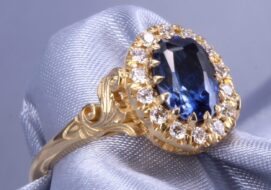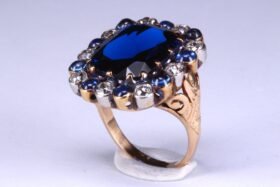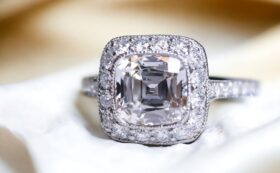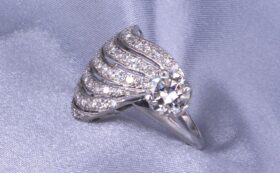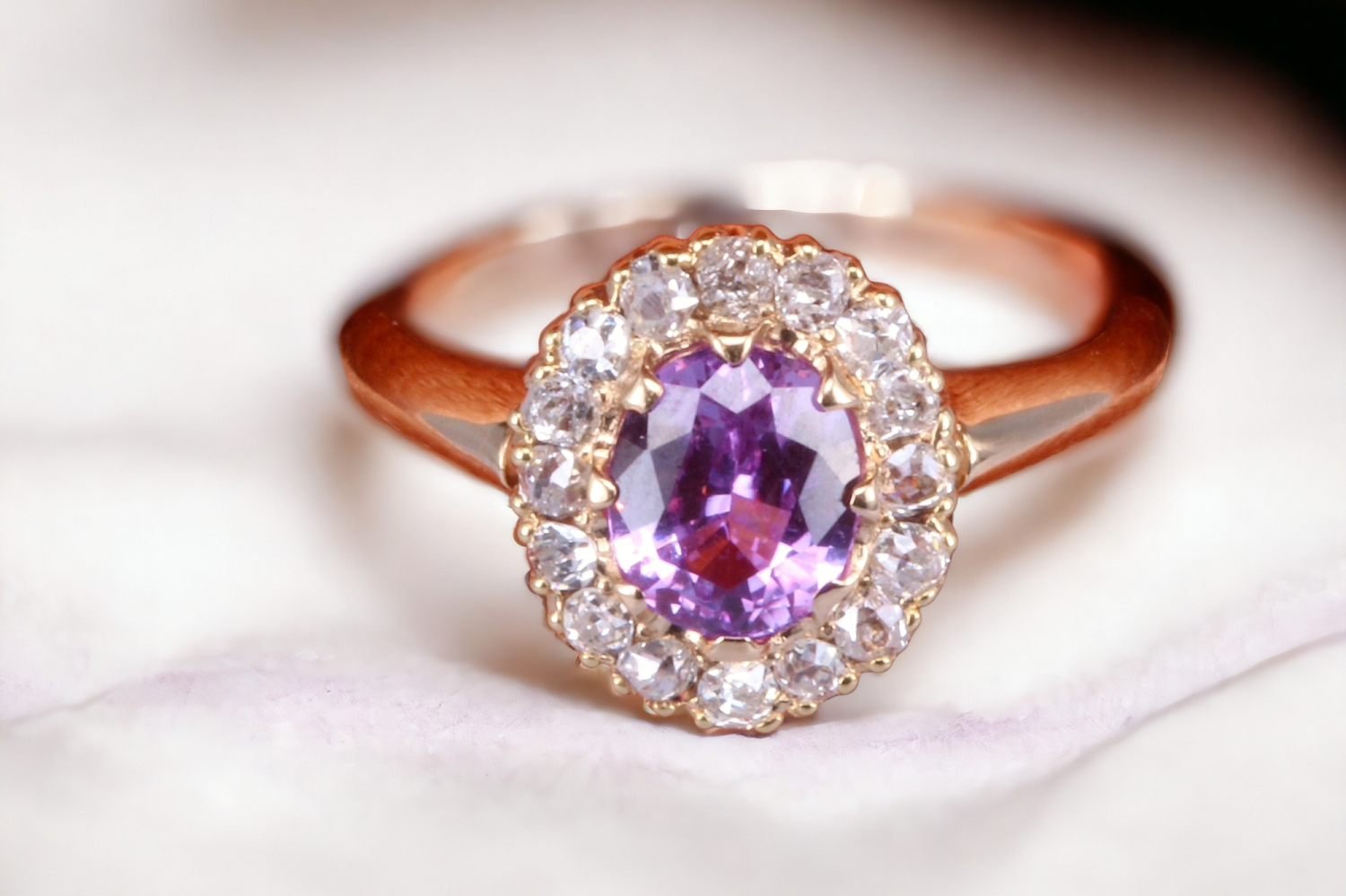
13 Apr Purple Sapphire Guide for Jewelry Buyers & Sellers
Purple sapphires have become increasingly popular lately, being set into custom engagement rings and other fine jewelry. This renewed interest in purple sapphires doesn’t come as a surprise to C. Blackburn Jewelers in La Jolla. We have long had a passion for sapphire estate jewelry, and are always on the lookout for vintage and antique jewelry set with purple sapphires.
For example, Tiffany & Co. created some gorgeous purple sapphire rings during the Art Deco period, while Cartier was famous for creating statement rings set with large carat purple “star” sapphires during the 1950s. More recently, Harry Winston has been creating stunning diamonds necklaces that are set with purple and/or pink sapphires.
If you would like to sell purple sapphire jewelry in San Diego, give us call at 858-251-3006 to set up an appointment for a free market appraisal and cash offer. We also work with estate jewelry sellers nationwide who’d like to sell a purple sapphire ring, necklace, or earrings. You can text us photos and details about your item to: 619-723-8589.
At C. Blackburn Jewelers, we don’t only buy estate jewelry. Our owner Carl Blackburn is a San Diego jewelry designer who loves to work with purple sapphires when creating custom engagement rings and other fine jewelry. He has a deep appreciation for the striking color of purple sapphires, as well as their symbolism and history.
The History & Symbolism of Purple Sapphires
Purple sapphires have a rich history that intertwines with the lore and allure of sapphires in general. Unlike their more renowned blue counterparts, purple sapphires have carved their own niche in the world of gemstones.
Purple sapphires are most strongly associated with royalty and nobility. Purple has long been considered the color of kings and queens, symbolizing power, wealth, and wisdom (an association that stretches back to ancient Persia, Greece, and Egypt). The rich hues of purple and blue sapphires also were believed to possess magical properties and often were worn by royalty to protect against harm.
In addition to their regal symbolism, purple sapphires have been associated with spirituality and inner peace. The color purple is linked with the crown chakra, which is believed to govern our spiritual connection and higher consciousness. Wearing a purple sapphire is said to enhance your spiritual awareness and promote a sense of calm and tranquility.
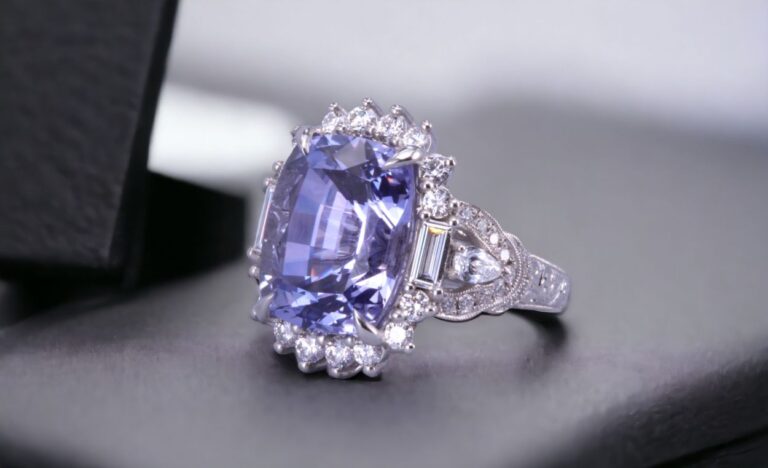
Purple Sapphire Color Shades
When you go to sell purple sapphire jewelry or have custom jewelry set with a purple sapphire, one factor that influences its value is its shade of color. We can divide purple sapphire shades into the following categories:
Lavender Sapphires: These are on the lighter end of the spectrum, embodying a soft, pastel purple that can sometimes lean towards a pinkish or bluish hue. Lavender sapphires are prized for their gentle, romantic appeal.
Lilac Sapphires: Similar to lavender but often with a slightly deeper tone, lilac sapphires strike a balance between softness and the richer purples that define the category.
Violet Sapphires: Moving into the deeper shades, violet sapphires showcase a blend of blue and purple that is both rich and vibrant. They can vary from medium to dark tones, offering a striking visual impact.
Deep Purple Sapphires: The most intense shade of the spectrum, these sapphires exhibit a deep, saturated purple that can almost verge on being opaque. These are often the most expensive purple sapphires and are highly sought after for their bold color and rarity.
Regardless of the shade of the purple sapphire in your engagement ring or estate jewelry, the following factors will increase its value: 1) evenly distributed, intense color saturation, 2) minimal inclusions, 3) high degree of transparency, and 4) a larger carat size.
At C. Blackburn Jewelers, we can source a gorgeous purple sapphire to match your custom engagement ring budget, and we pay generous prices for signed estate jewelry set with purple sapphires. Give us a call at 858-251-3006 to let us know how we can help you, or get in touch via our Contact page.
Optical Effects in Purple Sapphires
As to optical effects in purple sapphires, first there is “pleochroism,” which is when the gemstone displays two or more colors when viewed from different angles. This is a common effect that won’t necessarily increase the value of your gemstone. But sometimes pleochroism in purple sapphires can result in a beautiful interplay between shades of purple, violet, and sometimes blue or pink, depending on the light and angle of view — which may increase the stone’s value.
Next, we have “asterism,” also known as the Star Effect. This is a rare and coveted feature where the stone shows a star-like pattern. This effect is caused by the presence of needle-like inclusions (often rutile) that are oriented in specific directions within the crystal. When cut into a cabochon (a smooth, rounded shape with no facets), these sapphires can display a striking star effect with four, six, or sometimes twelve rays. The star effect is best observed under direct light and adds a unique character to the gemstone.
Then, there are color changing purple sapphires. This phenomenon is similar to the well-known color change seen in alexandrite. Color-changing sapphires can shift across a range of colors, but when it comes to those that primarily display shades of purple, the color change typically involves a transition from a bluish-purple in daylight or fluorescent lighting to a purplish-red or crimson in incandescent light.
Where Do Purple Sapphires Come From?
The source of purple sapphires is as varied as their color. Historically, Sri Lanka (Ceylon) has been a significant source of sapphires, including purple ones. The island’s rich gemstone deposits have been mined for thousands of years. More recently, countries like Madagascar, Myanmar (Burma), and Tanzania have become important suppliers of purple sapphires. Each locale contributes its unique shade to the spectrum of purple, influenced by the specific geological conditions and trace elements present during the sapphires’ formation.
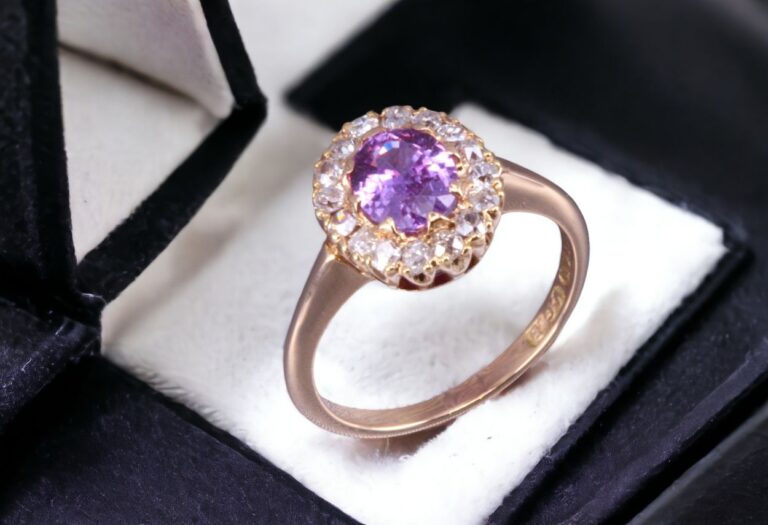
Popular Cuts for Purple Sapphire Rings & Jewelry
Purple sapphires, like other colored gemstones, are cut in a variety of shapes and styles to enhance their color, clarity, and overall beauty. The choice of cut can significantly affect a gemstone’s appearance, brilliance, and appeal.
If you are looking to set a custom engagement ring with a purple sapphire, Carl Blackburn at C. Blackburn Jewelers (La Jolla) will discuss with you all gemstone cut options, helping you choose the perfect one to fit your custom jewelry design.
Round Cut: The round brilliant cut is one of the most popular and traditional cuts for gemstones, prized for its ability to maximize light return and enhance a stone’s brilliance and sparkle. In purple sapphires, a well-executed round cut can accentuate the depth and richness of the color while providing significant shine.
Oval Cut: Oval cuts are favored for their elongated shape, which can make the gemstone appear larger than its actual carat weight. This cut also allows for good light reflection, enhancing the sapphire’s color and brilliance. Oval-cut purple sapphires are versatile and suit a wide range of jewelry styles, from classic to contemporary.
Cushion Cut: The cushion cut, with its rounded corners and larger facets, offers a soft, romantic look while maximizing the gemstone’s color. This cut has been popular for over a century and continues to be a favorite for purple sapphires, especially in engagement rings and fine jewelry, due to its vintage appeal.
Emerald Cut: Emerald cuts are rectangular with cut corners and feature step facets that create a unique optical appearance. This cut emphasizes the clarity of the gemstone and presents the sapphire’s color in a distinct, elegant manner. While it may not sparkle as much as other cuts, the emerald cut showcases the depth and saturation of purple sapphires with a sophisticated flair.
Pear Cut: The pear or teardrop cut combines the qualities of both round and marquise cuts, culminating in a shape that offers both brilliance and uniqueness. Pear-cut purple sapphires are often used in pendants and earrings, where their distinctive shape can be fully appreciated.
Marquise Cut: The marquise cut, with its elongated shape and pointed ends, is designed to maximize the carat weight of the gemstone, making it appear larger. This cut can also make the fingers of the wearer look more slender and long. Marquise-cut purple sapphires are distinctive and dramatic, making them a bold choice for jewelry.
Cabochon Cut: Not all purple sapphires are faceted. Some are cut into cabochons, which are smooth and rounded with a flat bottom. This cut is particularly favored for sapphires with asterism (the star effect) or those with inclusions that create interesting visual effects. Cabochon cuts emphasize the color and depth of the stone rather than its sparkle.
The choice of cut for a purple sapphire often depends on the individual stone’s qualities, including its color saturation, clarity, and shape, as well as the desired final effect of the jewelry piece. A well-chosen cut can significantly enhance the natural beauty of a purple sapphire, making it a gorgeous centerpiece for any piece of jewelry.
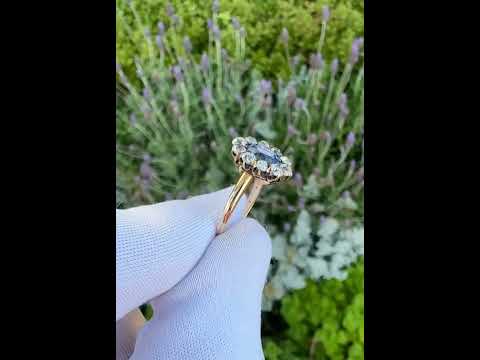
Buy or Sell Purple Sapphire Jewelry
Whether you are looking to sell sapphire jewelry or buy custom jewelry set with purple sapphires, contact C. Blackburn Jewelers today. Take advantage of owner Carl Blackburn‘s decades of experience as both and estate jeweler and fine jewelry designer, as well as his deep knowledge of purple sapphires.
For estate jewelry sellers, the first step is to send Carl a text message at 619-723-8589, describing the purple sapphire jewelry you would like to sell, along with photos of your item. If you live in San Diego, and would like have Carl design a custom engagement ring or fine jewelry, leave him a voicemail at 858-251-3006, or send an email via the contact form below.

